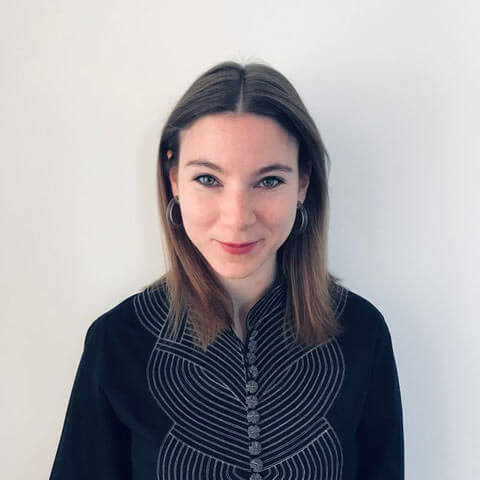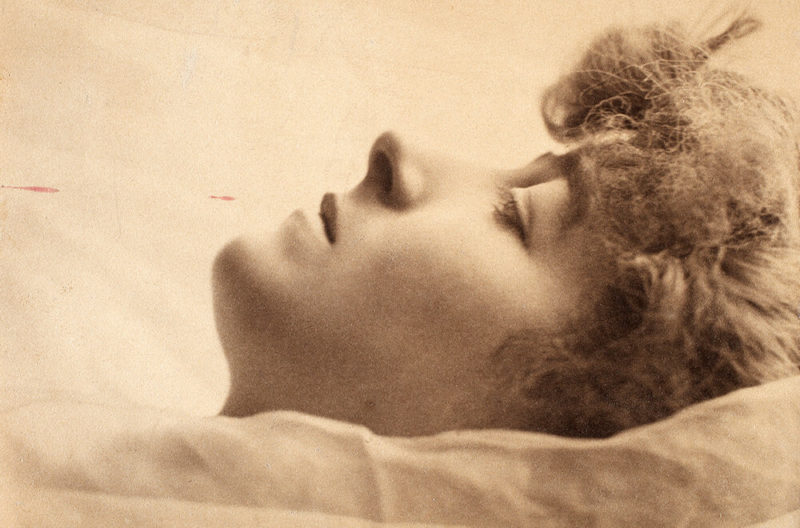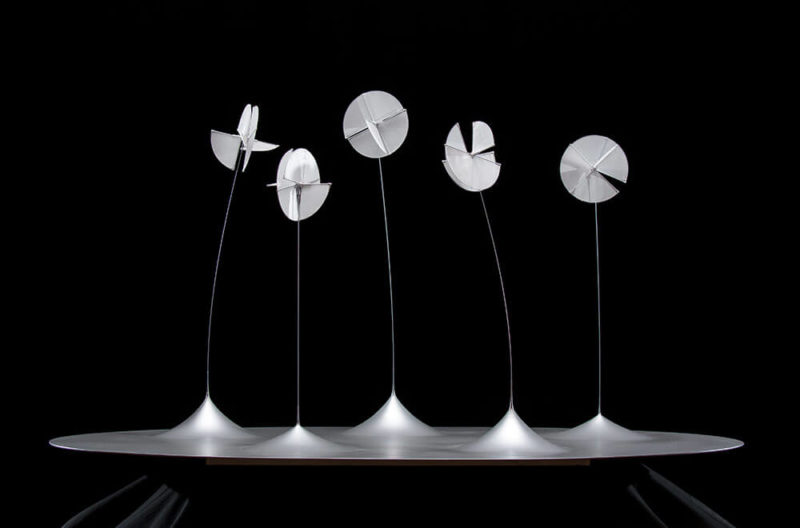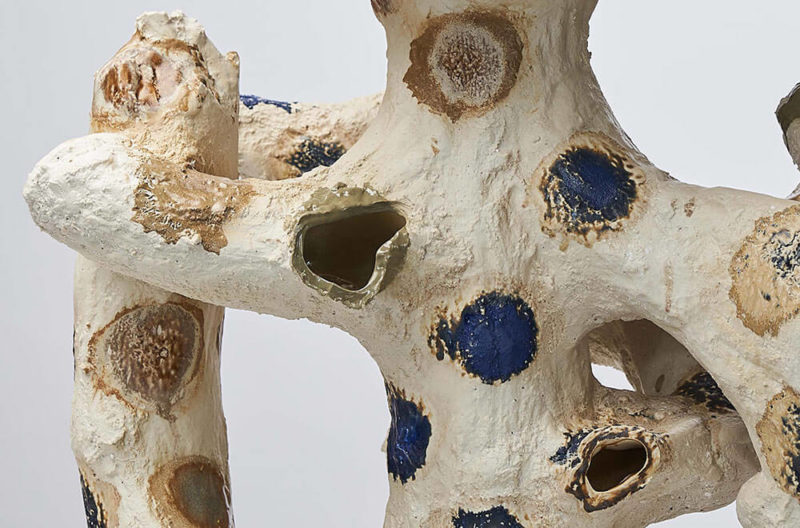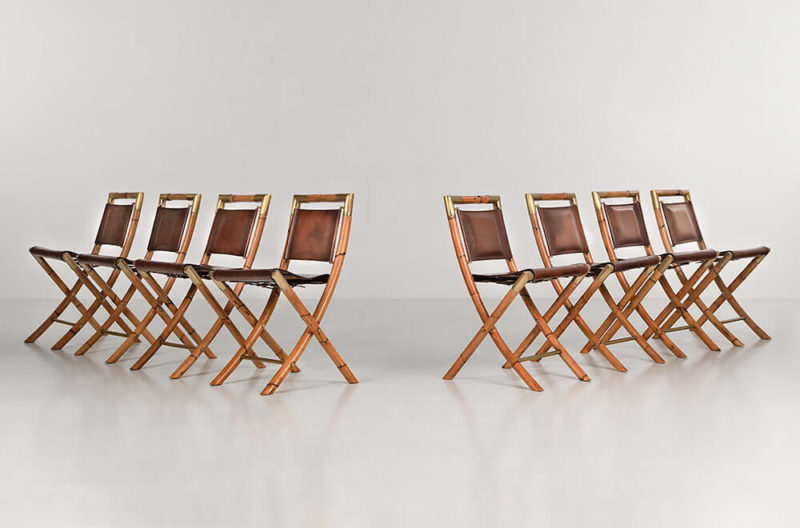‘Fifty Years of Modernity’
“I learnt from my mother that it is more exciting to discover an exceptional piece by an unknown designer, than a minor one by a major name.”
Galerie Anne-Sophie Duval, Paris
14th April – 4th June 2022
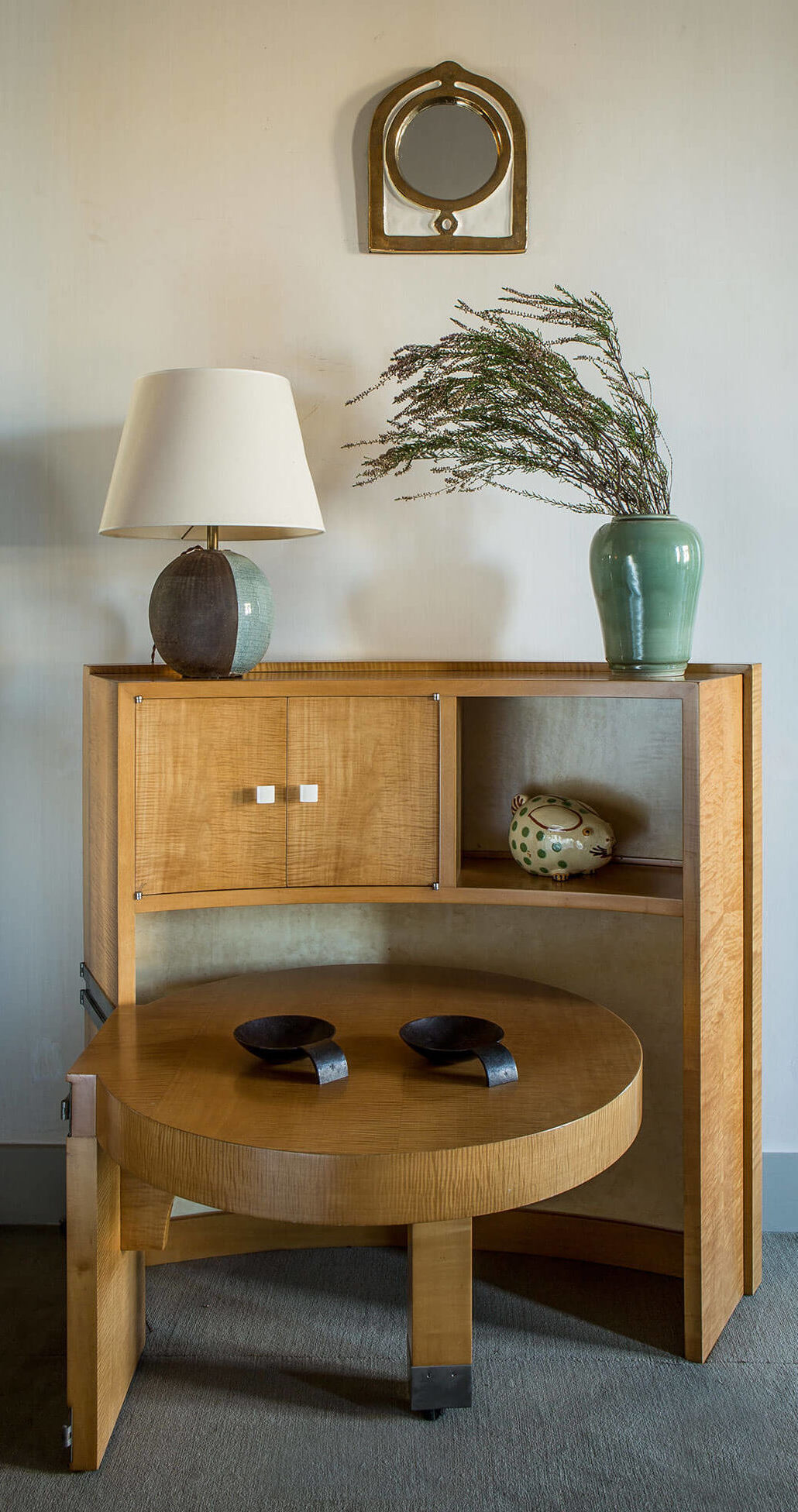
Gallery view: Pierre Chareau, bookcase with swivel pedestal table in sycamore, chromed metal, parchment, circa 1930; Jean Besnard, ball lamp, circa 1930; Maurice Gensoli, celadon green stoneware vase, circa 1920; Primavera, glazed ceramic rabbit money box, circa 1930; Jean-Michel Frank, pair of bronze patinated iron bowls, circa 1930; Mithé Espelt, ‘Arche’ mirror, circa 1965
COURTESY: © Galerie Anne-Sophie Duval
RUE DE SEINE is a treasure trove for any 20th century design enthusiast. Strolling down the narrow sidewalks, you pass the most iconic of Parisian design galleries: Galerie Matthieu Richard, Vallois, Jean-François Laffanour, Alain Marcelpoil, Jousse Entreprise, Jacques Lacoste and Thomas Fritsch, to name a few. These galleries house impressive pieces of the French ‘art de vivre’ – testimony of the longstanding relationship between Paris and the invention of modernity through the decorative arts.
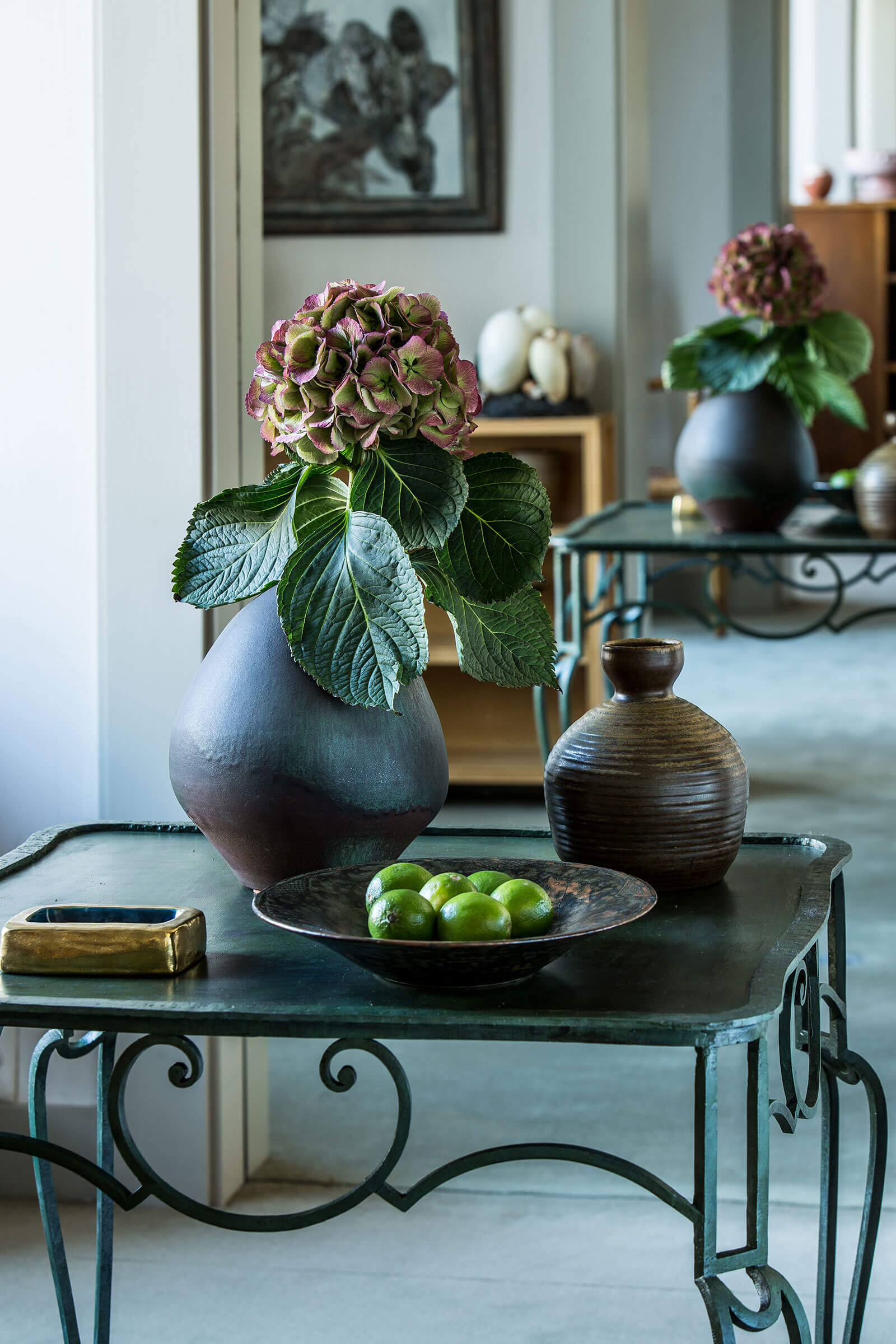
Gallery view: Seraphim Soudbinin, ‘Madoura’ ceramic vase; Mithé Espelt, ceramic pocket tray; Jean-Charles Moreux, painted wrought iron garden table, circa 1930
COURTESY: © Galerie Anne-Sophie Duval
However, should you walk further towards the river and make a small turn onto Quai Malaquais you will find yourself at the heart of the rediscovery of French design – the gallery Anne-Sophie Duval.
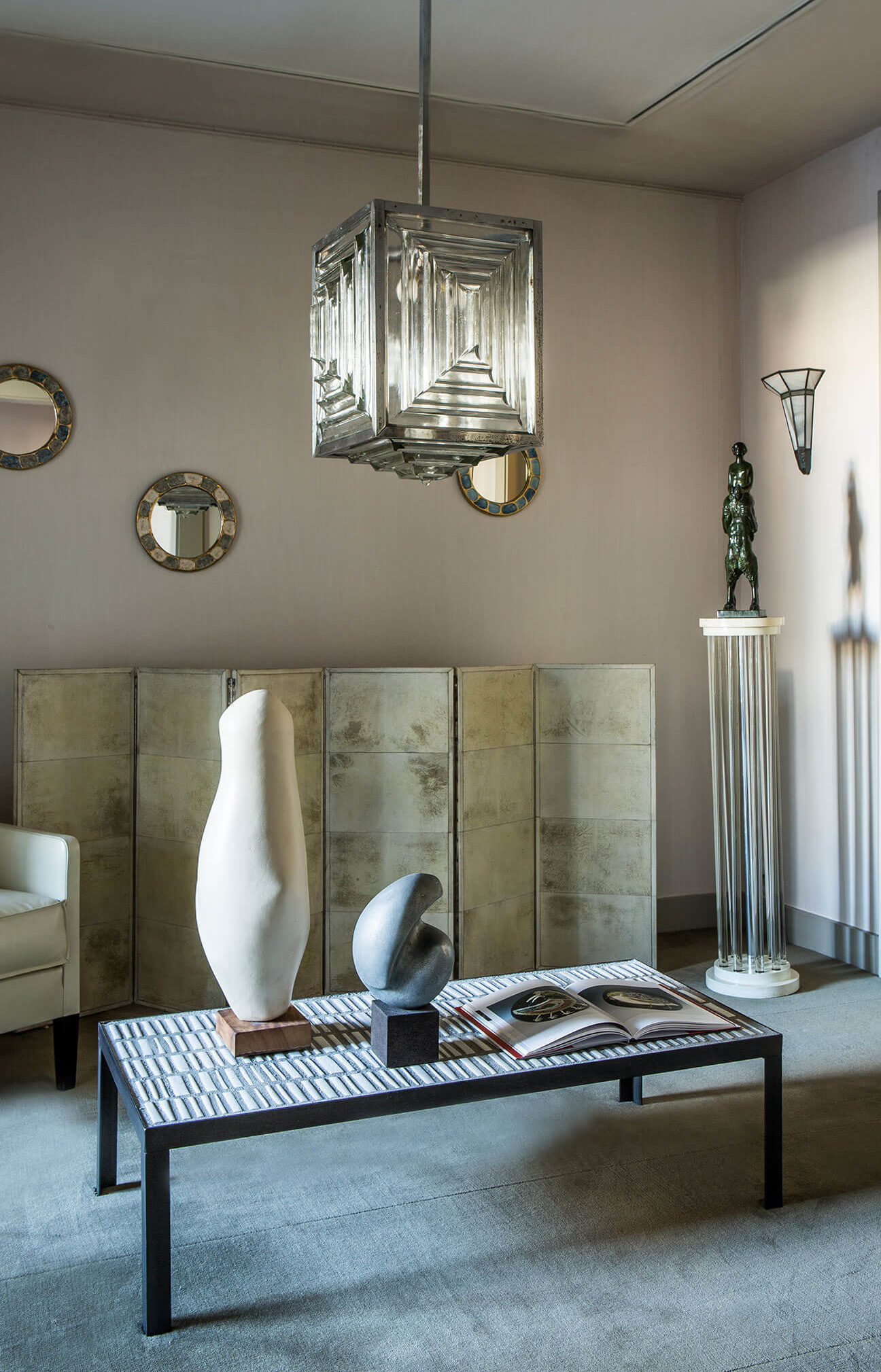
Gallery view: Jean-Michel Frank, ‘Cole Porter’ leather armchair and parchment screen, circa 1930; Marius-Ernest Sabino, glass and metal suspension lamp; Georges Jouve, earthenware and cement coffee table, circa 1960; Michelle Hartmann, abstract ceramic sculptures, circa 1975; Mithé Espelt, ‘Crystal’ mirrors, circa 1956
COURTESY: © Galerie Anne-Sophie Duval
Situated in the 17th century Hôtel de Châteauneuf, the gallery has evolved through three generations of free-spirited and visionary women: Yvette Barran, her daughter Anne-Sophie Duval and her grand-daughter Julie Blum (the current owner of the gallery).
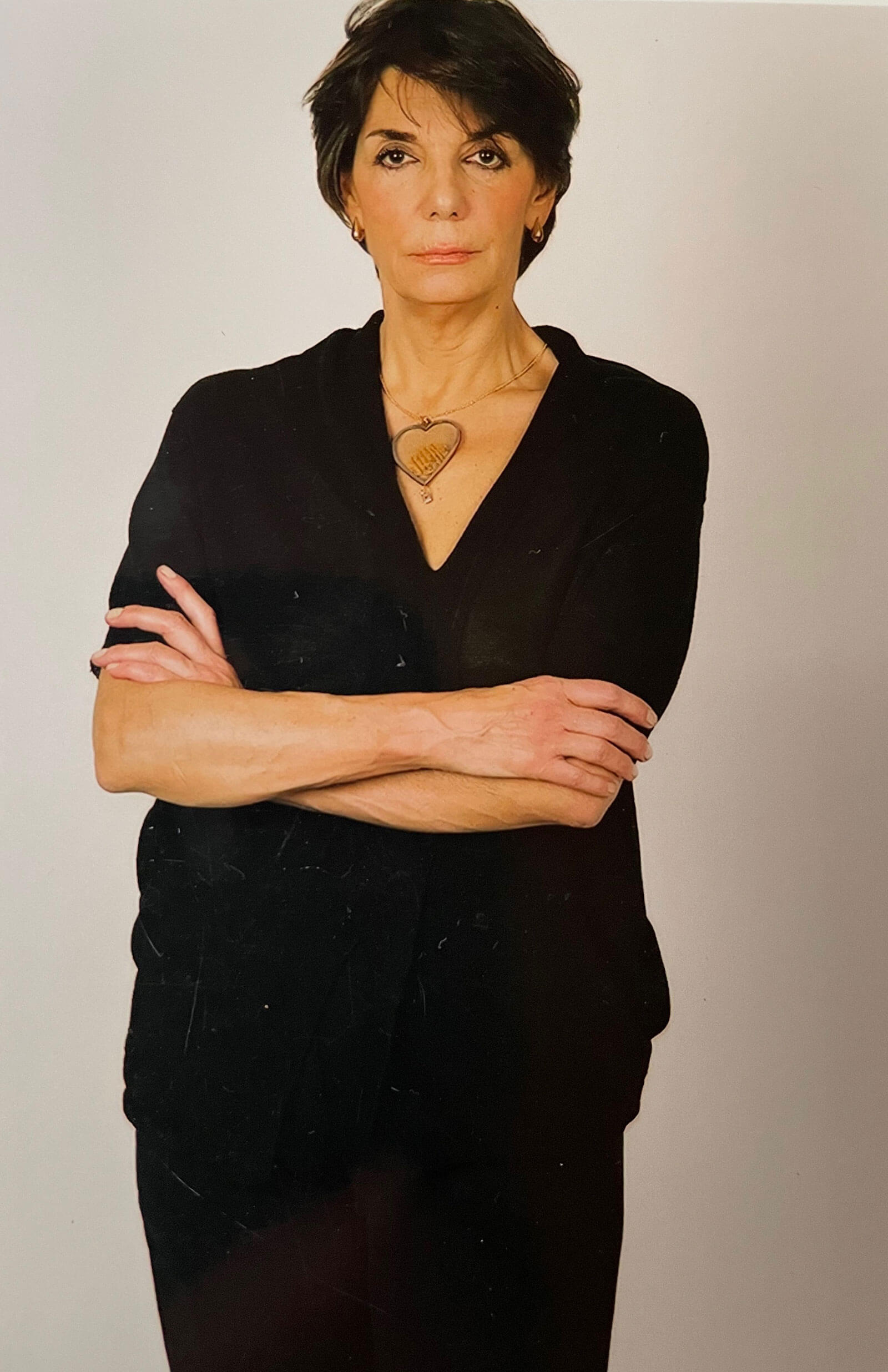
Anne-Sophie Duval in the late 1990s
COURTESY: © Galerie Anne-Sophie Duval
“The gallery has evolved through three generations of free-spirited and visionary women”
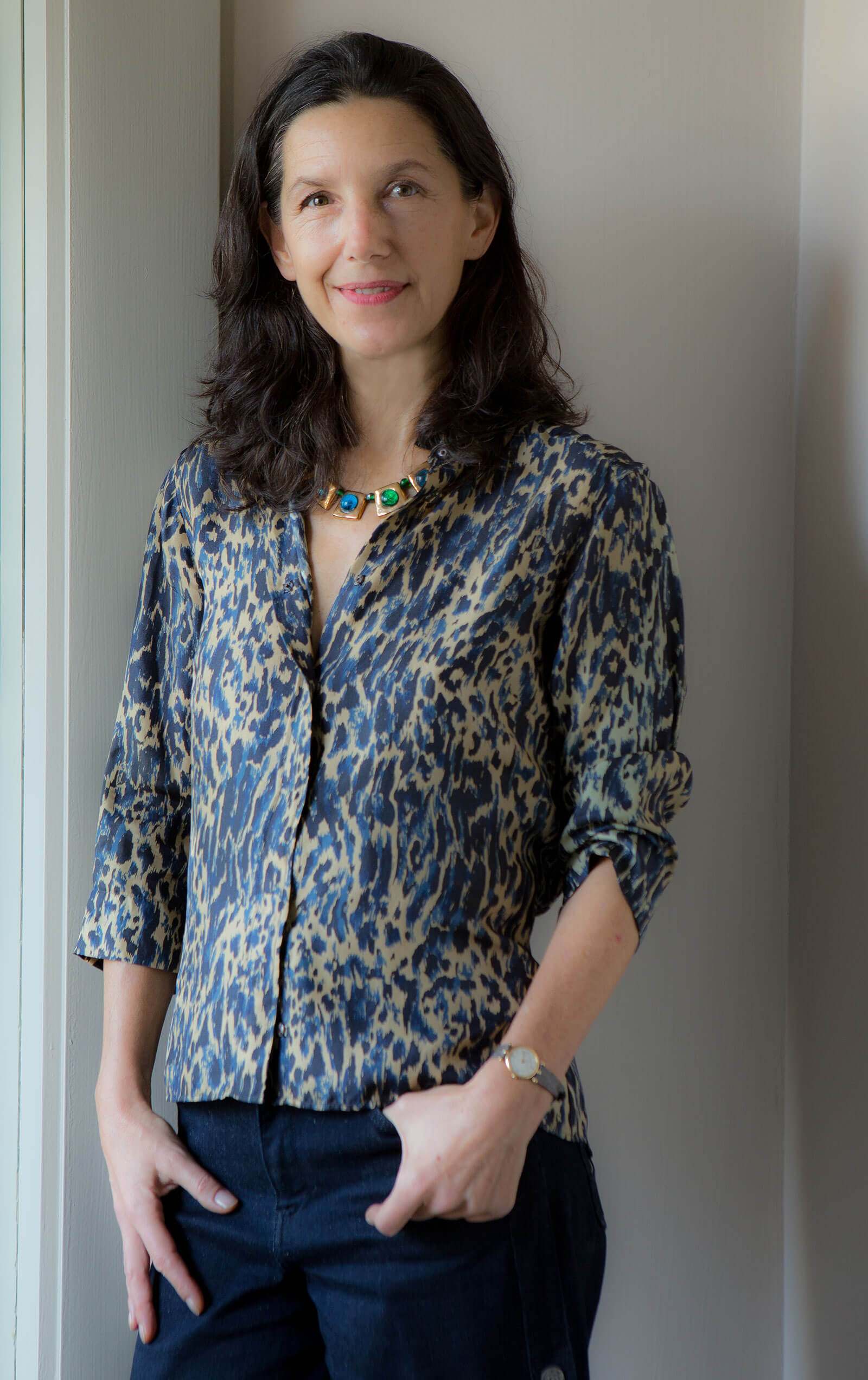
Julie Blum
COURTESY: © Galerie Anne-Sophie Duval
“Yvette Barran, her daughter Anne-Sophie Duval, and her grand-daughter Julie Blum”
Yvette opened a gallery in the early 1960s on Rue Bonaparte, aiming to show 19th century painting and ‘objets de curiosité’. She soon became passionate about Art Nouveau, the interlaced stems and flowers of which were seen as decadent and has-been by European society. Before long American collectors such as Andy Warhol, Karl Lagerfeld and Ileana Sonnabend – infected by Yvette’s enthusiasm and flair – became interested in this design era, seeing echoes of surrealism and flower power.
The young Anne-Sophie Duval learned everything alongside her mother. Together, they explored archive images and soon discovered the exquisite style that reshaped French design and modernity itself – Art Deco. In 1972, Anne-Sophie opened her own gallery at 5 Quai Malaquais to show some of the great creations of the early 20th century.
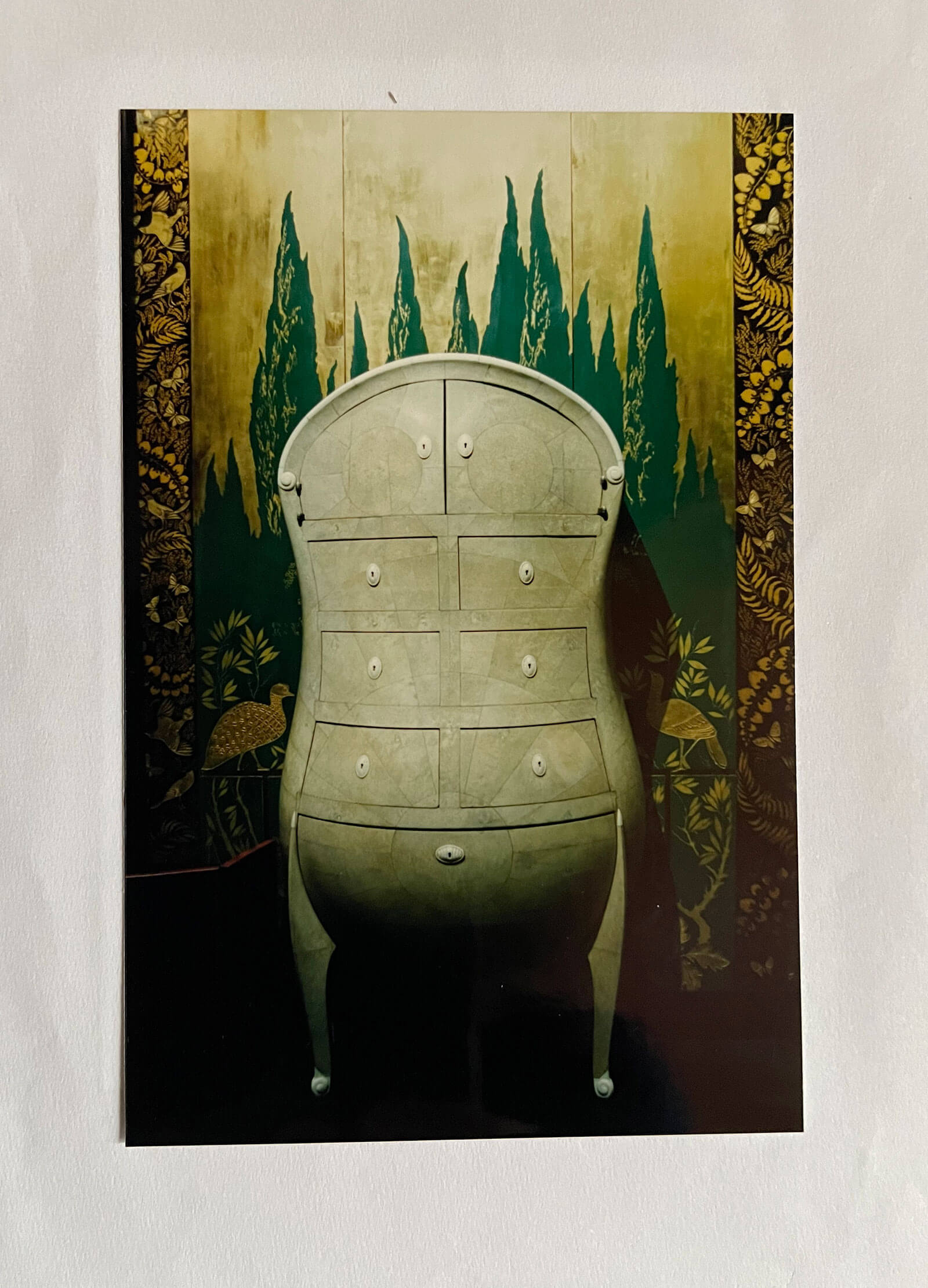
André Groult, anthropomorphic furniture in shagreen. Exhibited on the gallery’s stand at the Biennale des Antiquaires in 1994
COURTESY: © Galerie Anne-Sophie Duval
Anne-Sophie Duval became one of the names associated with the rediscovery of the Art Deco movement alongside Félix Marcilhac, Barry Friedman and Cheska Vallois. Soon after opening, Duval was the first to exhibit Art Deco works at the Biennale des Antiquaires, an important fair of the time that focused on classic French furniture from the 18th century. Her stand was decorated by a young up-and-coming fashion designer – Karl Lagerfeld.
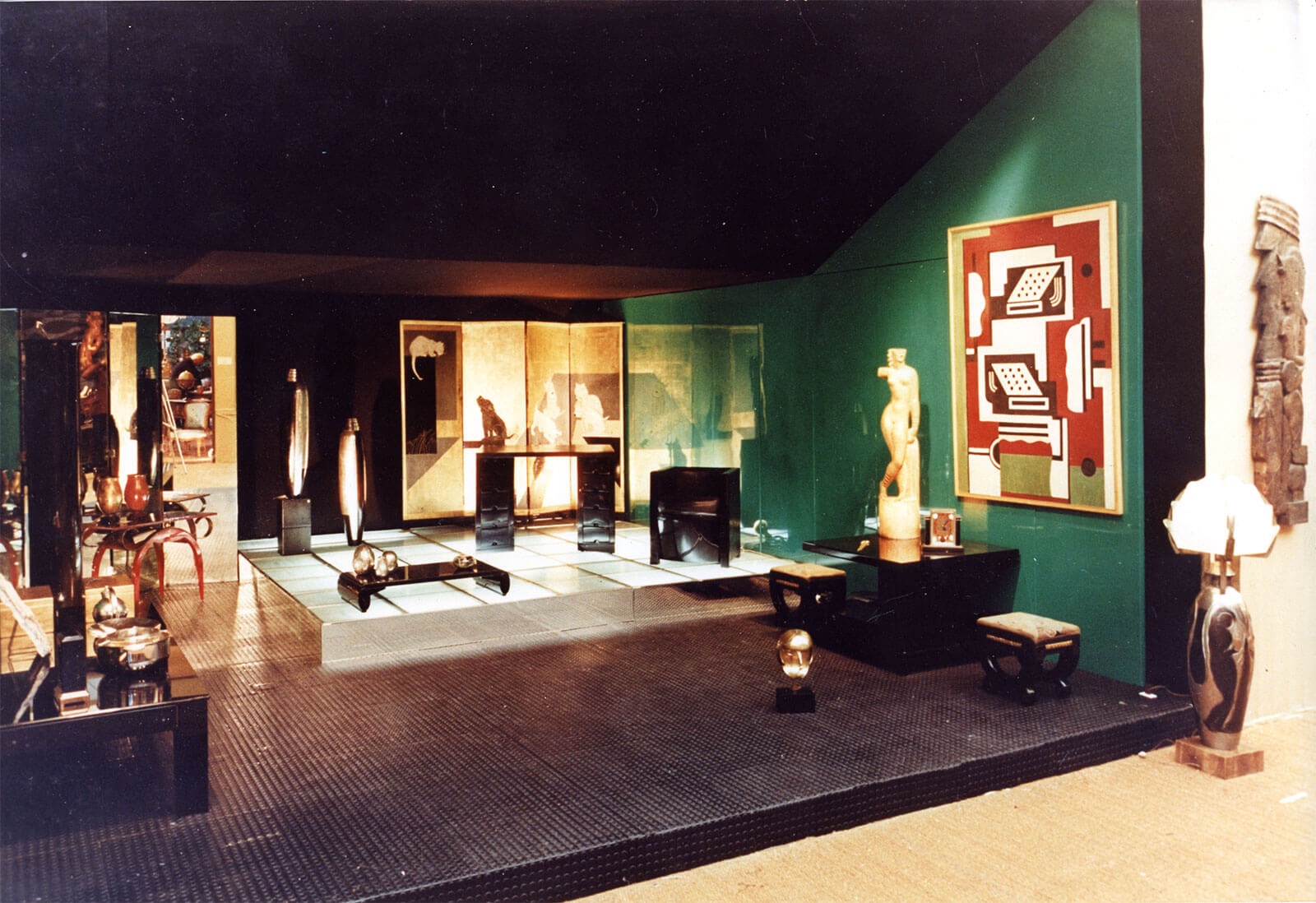
Anne-Sophie Duval gallery stand at the Biennale des Antiquaires in Paris in 1972, decorated by Karl Lagerfeld.
COURTESY: © Galerie Anne-Sophie Duval
In the same year, the extensive Art Deco collection from the estate of fashion designer Jacques Doucet was put up for sale, containing work by important designers such as Eileen Gray, Jean Dunand and André Groult. This contributed to the rise of Art Deco’s influence and importance.
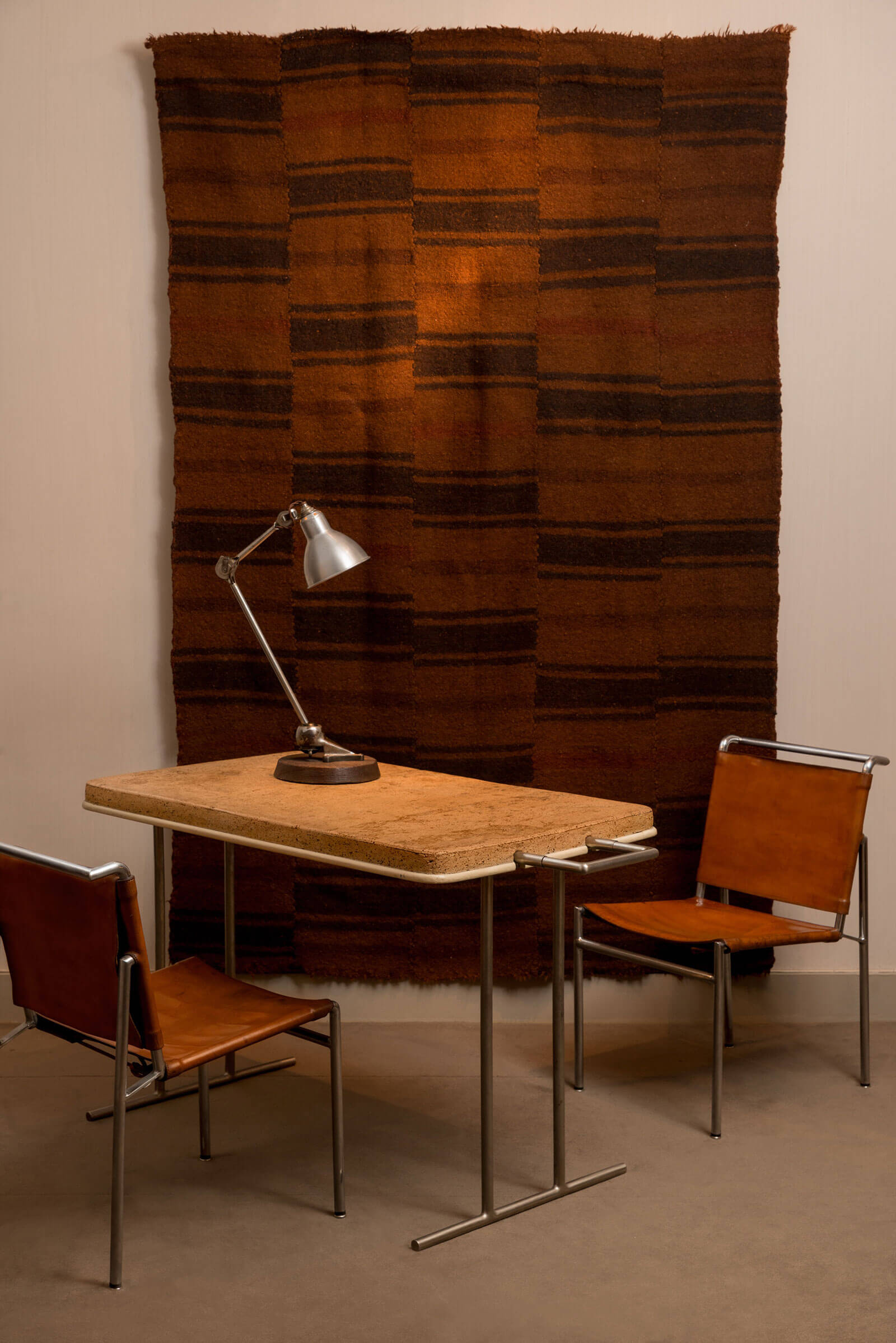
Modernist furniture by Eileen Gray, circa 1930
COURTESY: © Galerie Anne-Sophie Duval
Today, Art Deco works fetch record prices and Anne-Sophie’s daughter celebrates the 50 years of the gallery that she took over in 2008. ‘Etonnantes Modernités’ (Astonishing Modernities) retraces the story and spirit of the gallery through a selection of iconic and meaningful objects.
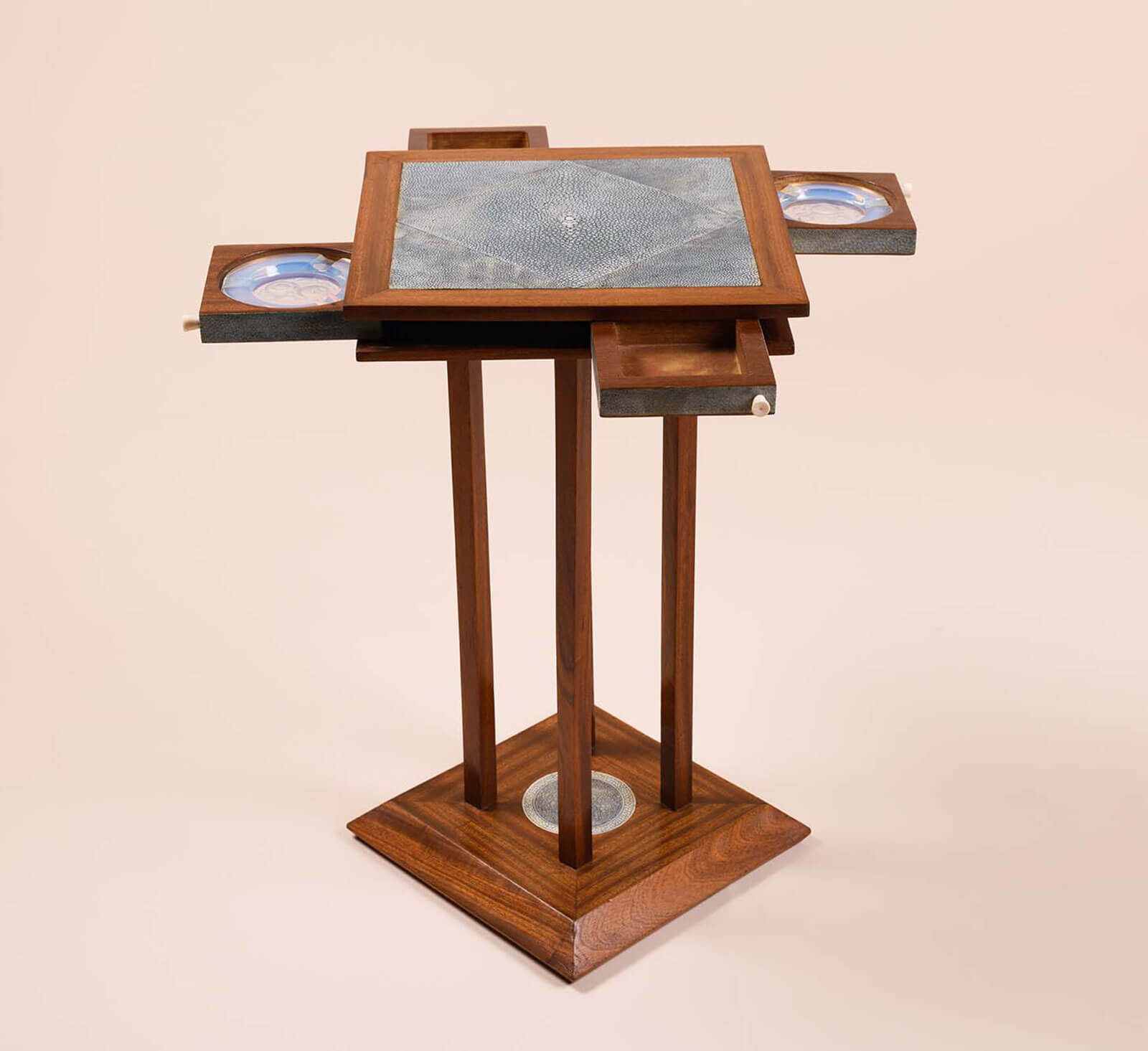
Clément Rousseau, mahogany and shagreen side table, 1933
COURTESY: © Galerie Anne-Sophie Duval
“I thought that it was time to tell the story of this singular adventure and share the numerous discoveries that paved the way for the gallery for a half century. Sometimes precise, sometimes blurry, these objects are my memories and constitute the ‘fil rouge’ of this retrospective,” explains Blum.
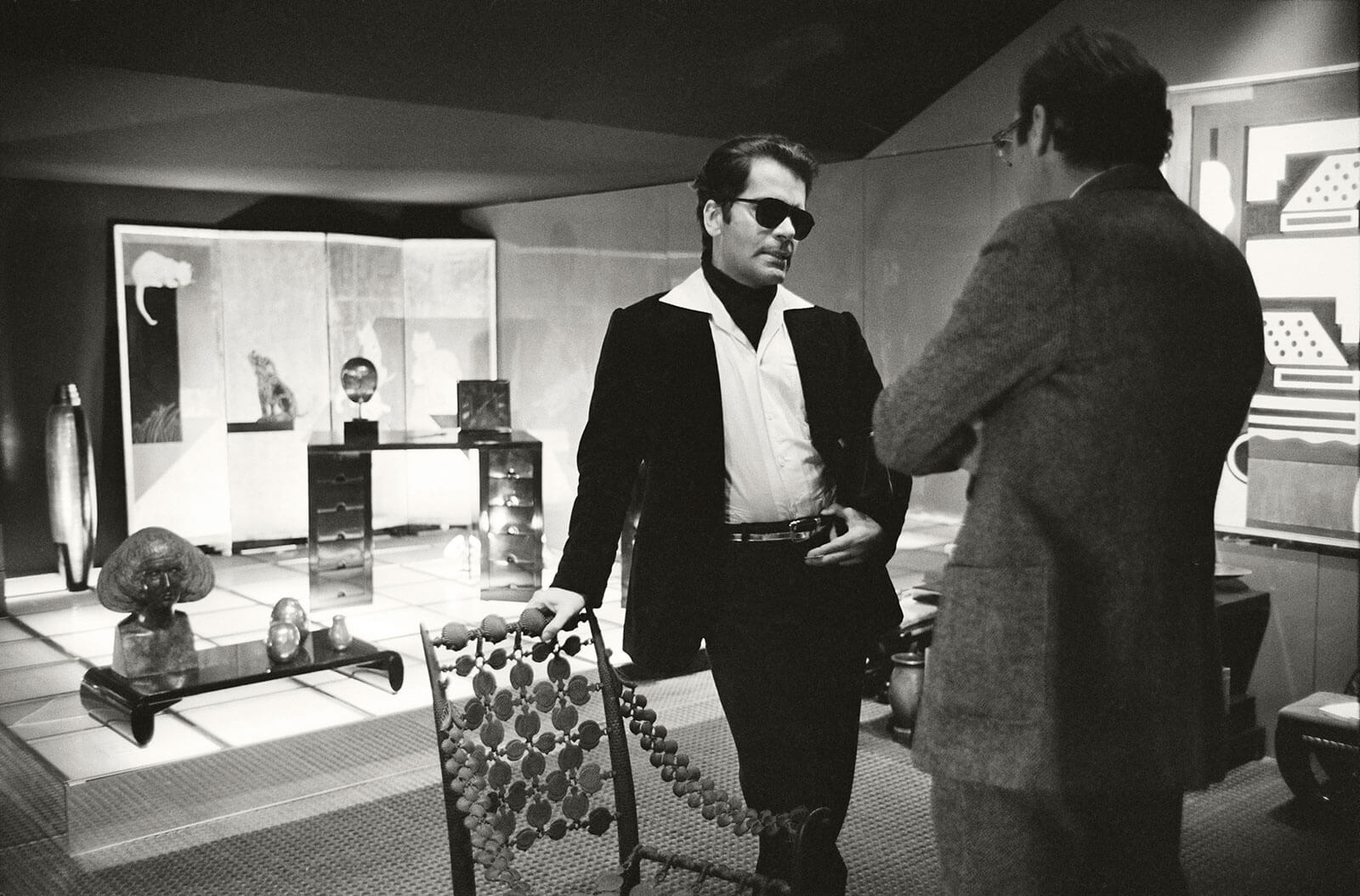
Karl Lagerfeld with Armand-Albert Rateau, ‘Pompeian’ armchair with fishes in bronze during the Rateau retrospective at the gallery in 1992.
COURTESY: © Galerie Anne-Sophie Duval / PHOTOGRAPH: Max Scheler
The gallery opens onto a large corridor flanked by luxurious rooms of elegant – but deceiving – simplicity. Visitors see a delicate pair of yellow-upholstered side chairs by Jean-Michel Frank, dramatic stools by Paul Iribe, a stunning parchment-covered library by Paul Dupré-Lafon, an inviting armchair by André Groult and at the end of the corridor a ravishing composition in front of an emerald lacquer screen designed by Karl Lagerfeld for the Biennale des Antiquaries.
The masterpiece of the exhibition is a four-leaved screen panel by Armand-Albert Rateau from 1925. Originally conceived for the Duchesse d’Albe in 1922 for her Liria Palace in Madrid, Rateau created a second version of the splendid screen for the Exposition Internationale des Arts Décoratifs in 1925, exhibited in Galerie Seligmann.

Armand-Albert Rateau, screen panel, 1925
COURTESY: © Galerie Anne-Sophie Duval
The ensemblier (decorator) Armand-Albert Rateau (1882-1938) is one of the most important name of early Art Deco. His distinctive aesthetic was inspired by the Orient and antiquity. The exhibition also features a pair of armchairs by Rateau carved with daisies (‘marguerites’ in French) that reference Jeanne Lanvin’s daughter, Marguerite.
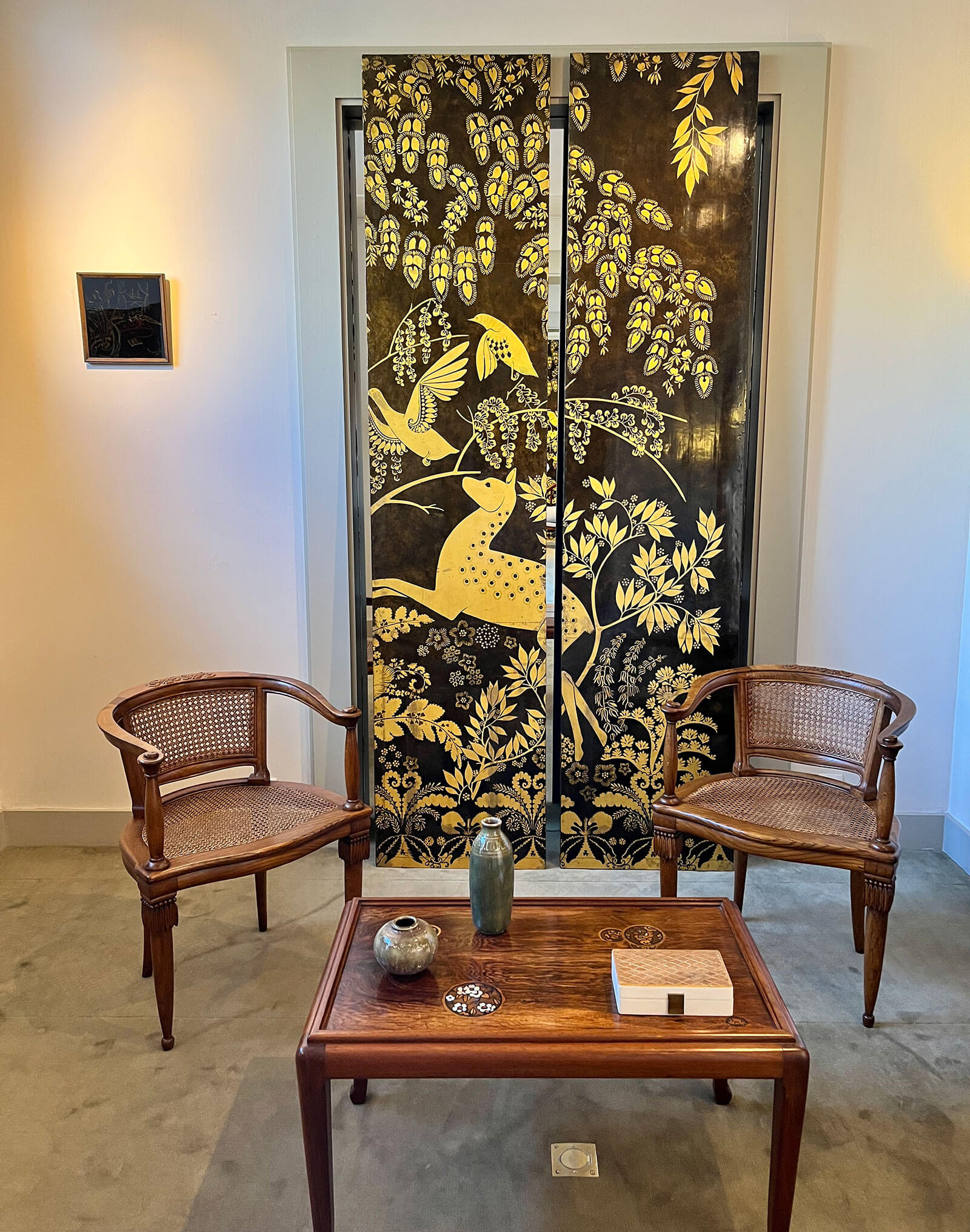
Armand-Albert Rateau, screen panel, 1925
COURTESY: © Galerie Anne-Sophie Duval
Amongst the illustrious names that made history, there are also exceptional unsigned pieces and objects made by lesser known designers and artists: a pair of blue painted unsigned Viennese armchairs, for instance, or a parchment and resin illuminated sculpture created by Léon de Leyritz for the play ‘Domino’ by Marcel Achard. The exhibition also includes a set of graceful nest tables by Georges de Feure from 1910, which are made from Ceylon lemon trees and mother of pearl, coral and ebony marquetry.
“I learnt from my mother that it is more exiting to discover an exceptional piece by an unknown designer, than a minor one by a major name,” comments Blum. Just like her mother, Blum defies any rigid definition of design and constantly puts the aesthetic up for debate. An audacious choice in the current market that mostly recognises names or brands.
All these designers mainly created for an elite clientele and their creations are rare and mostly owned by museums. This exhibition therefore offers a unique opportunity to see such works within such an intimate setting.
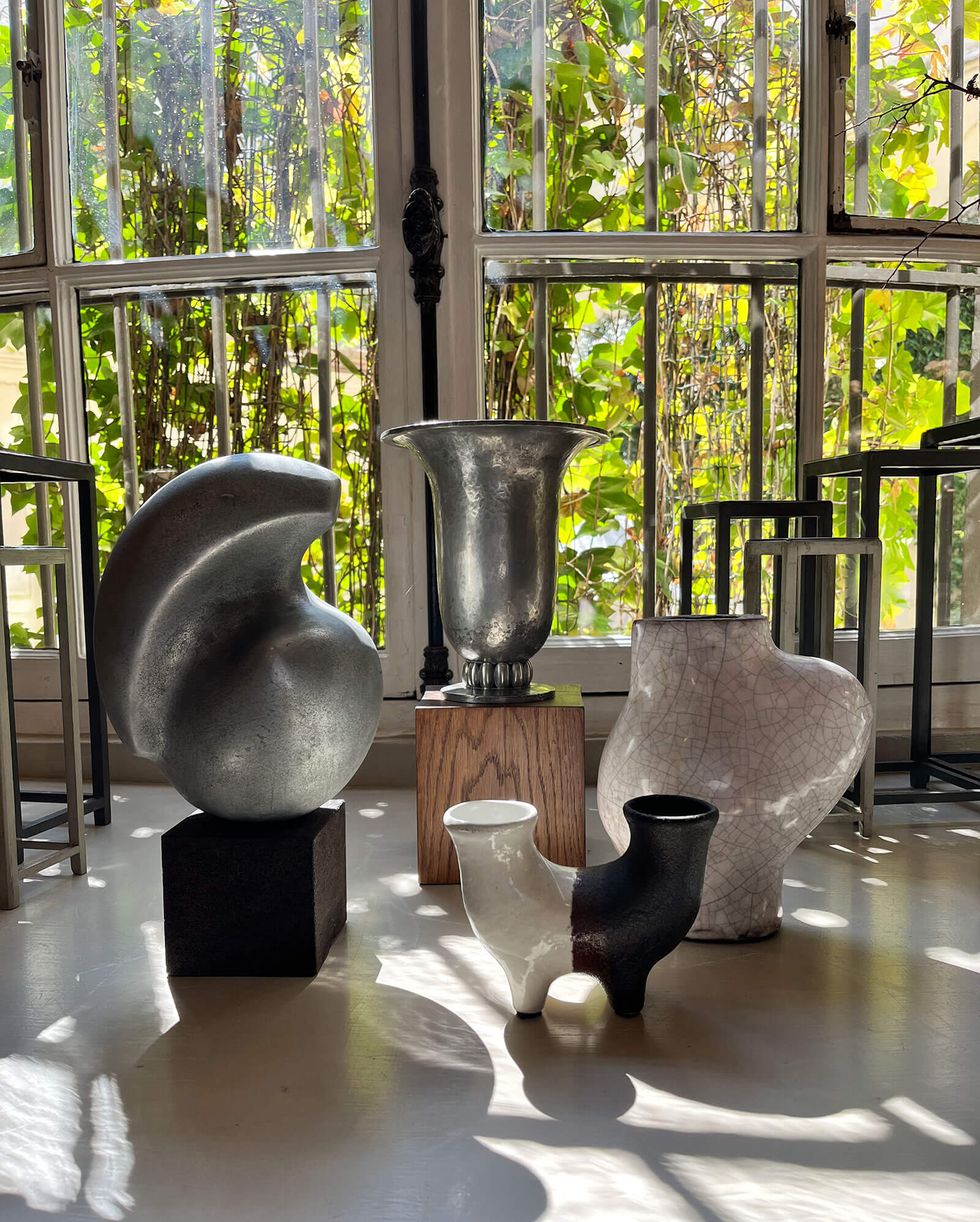
A collection of decorative objects including ceramic sculpture by Michelle Hartmann, metalwork by Maurice Daurat and ceramics by Gisèle Buthod-Garçon and the Accolay potters
COURTESY: © Galerie Anne-Sophie Duval
Galerie Anne-Sophie Duval, 5, Quai Malaquais, 75006 Paris.
